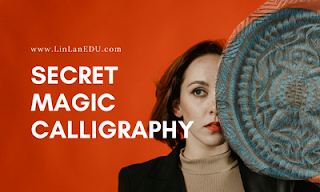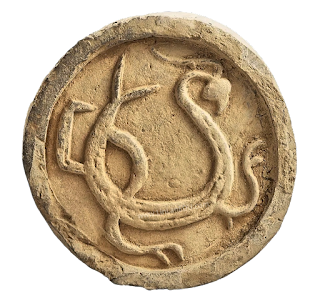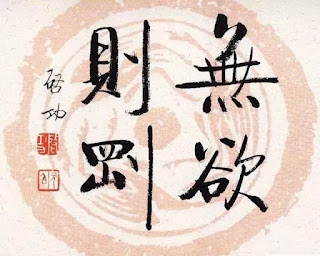Chinese calligraphy and Chinese characters have a long history and civilization, and with the change of centuries, calligraphy has undergone earth-shaking changes in China. And there is such a kind of calligraphy that really amazes us today!
"Wadang calligraphy" refers to the shelter that covers the front end of the eaves of the building in ancient Chinese architecture. Especially refers to the architectural accessories used to decorate and beautify and protect the eaves of buildings in the Han Dynasty.
There are characters or patterns engraved on the tiles. These patterns are beautifully designed, and the fonts are fluent and varied. There are cloud patterns, geometric patterns, gluttonous patterns, text patterns, animal patterns, etc., which are exquisite works of art and belong to the unique Chinese culture. Artistic heritage.
In the research history of the thousand-year-old wattang collection, most of the time, the word wattang is the leader.
Wadang is the sagging part of the tube tile on the eaves of ancient Chinese buildings. Because it is often stamped with exquisite patterns or characters, it has been paid more and more attention since the Tang and Song dynasties.
The research on Wadang can be roughly divided into the following four periods: The first period, Tang Zhiming, was the budding period when Wadang aroused people's interest and began to record.
His representative works include Wang Pizhi's "Interviews with Swallows and Swallows" in the Northern Song Dynasty, Huang Bosi's "East View and Yu Lun", and Li Haowen's "Chang'an Zhitu" in the Yuan Dynasty.
The second period from the Qing Dynasty to the Republic of China was the general rise of Wadang descriptions.
His representative works include "Qin Han Wa Dang Tu Ji" by Zhu Feng in Qianlong Dynasty of Qing Dynasty and "Qin Han Wa Dang Characters" by Luo Zhenyu in the early Republic of China.
The third period from the 1950s to the 1980s was the period of scientific Wadang data collection and research. Its representatives are Mr. Chen Zhi's "Overview of Qin and Han Wadang" and "New Compilation of Qin and Han Wadang Catalogs" and so on.
"Wadang" not only has pictures in traditional Chinese paintings, but also ancient Chinese calligraphy from a long time ago.
Because ancient epigraphy is centered on the study of characters on ancient cultural relics, in the history of the research on the collection of wadang for a thousand years, the writing of wadang has been the leader for most of the time.
During the Warring States Period, the art of Wadang reached its first peak, and achieved unprecedented achievements in the two types of patterns and images. The ancient city of Qi State (now Linzi, Shandong) has half-tiled trees with double beast patterns,
and Yanxiadu ( The half-tiles with gluttonous patterns (now Yixian, Hebei), the round tiles with animal patterns from Yongcheng, the capital of Qin (now Fengxiang, Shaanxi), and the moiré and sunflower patterns from Xianyang, are among the best.
In the Han Dynasty, wadang entered its heyday in terms of its extensive use and artistry. At that time, the Sanfu of the Western Han Dynasty (in the Guanzhong area of Shaanxi today), the Wei River, Liushui, Wuhua Tianbao, and Ligong Gardens were scattered during the period,
so there are a lot of Western Han Wadang remains in Shaanxi. In addition to all kinds of moiré tiles, the four gods of Qinglong, Baihu, Suzaku, and Xuanwu unearthed in the Han Chang'an city are the culmination masterpieces of patterned tiles and the entire tile.
Let me briefly explain the meaning of the Chinese calligraphy on this tile: to describe the mighty appearance of the noble ministers or generals of the princes.
The Chinese calligraphy above: means farmland and crops. This character is very similar to the Chinese character "田" today.
The phoenix symbolizes the noble and supreme queen in Chinese legend.
In the mid-Western Han Dynasty, the last and most important category of wadang appeared—word wadang. The word tile appeared the latest, but people's interest in it occurred the earliest and the most persistent.
Song people were the first to notice the word tile, but not a word for images and pattern tiles without words. This phenomenon continued until the period of the Republic of China.
In the past 50 years, modern archaeological excavations and research have been in full swing, but the status of writing tiles has not been fundamentally shaken.
Archaeological excavations have proved that the writing tiles may have appeared in the period of Emperor Jing of the Han Dynasty (previously 156-previously 141), popularized in the period of Emperor Wu (previously 140-previously 87), and flourished in the middle and late Western Han Dynasty.
The Western Han Dynasty was an unprecedentedly huge empire, as evidenced by the excavation of the Western Han script Wadang.
From Lake Baikal in Russia in the north, to the Korean Peninsula in the northeast, Guangzhou in the south, Fujian in the southeast, and Qinghai in the west, there are all unearthed Chinese characters of Wadang.
In the Eastern Han Dynasty, the word tile declined suddenly, and there were not many real objects, mainly found in Linzi, Shandong and Luoyang, Henan.
According to the text content of Wadang, the word Wadang can be divided into seven categories: palaces, official offices, houses, ancestral tombs, chronicles, others, and Ji language.
Judging from the existing data, there are about 400 kinds of wattangs with different text content, among which the types of Ji language tiles account for about half, and the physical objects of different versions account for the vast majority of the surviving text tiles. There are several or thirty or forty types of other types of text tiles.
What is the charm of Wadang calligraphy in the Western Han Dynasty?
In the Western Han Dynasty, the diameter of calligraphic tiles was mostly between 15cm and 18.5cm. The smaller ones were like "Zuoyi" tiles with a diameter of only 13cm, and the larger ones were like "Yiyanshou" tiles with a diameter of up to 22cm.
More than two thousand years ago, it was the royal family who was able to enjoy tiled houses and even beautifully decorated tiles, followed by government offices and individual high-ranking officials. In this way, Chinese calligraphy should come from outstanding artists at the time rather than ordinary craftsmen.
[] The text explanation above:
"Long live" originally meant to exist forever, and it was originally a congratulatory message from his subordinates to the monarch.
Today is also used as a tribute to express the emotional slogan of great appreciation. In China's feudal society since the Ming Dynasty, the term "long live" is synonymous with the supreme ruler.[]
The seal lines of the Western Han characters have reached a high degree of harmony in many aspects such as rigidity and softness, straightness, density, and leaning to the right.
[] The text explanation above:
"Anding Pengyang", these Chinese calligraphy characters refer to the name of a geographic county.[]
Qin Lisi founded Xiaozhuan, after unifying the Chinese characters, the seal script and official script of Qin and Han dynasties adopted the principle of symmetry and balance as the main composition principle, forming the shape of square characters. The book is on the stele, and he is chiseled on the bronze ware.
But this kind of square text, which is widely used and almost unified the world of Qin and Han calligraphy, has encountered unprecedented challenges when applied to Wadang, because the shape of Wadang is circular (individually semi-circular).
[] The text explanation above:
It expresses the Han Dynasty people's desire for immortality, and conveys the Han Dynasty people's pursuit of immortality.[]
Take the most common four-character tile among Western Han script tiles as an example. In the early days, the center of the tile was basically a convex spherical surface, some of which were columnar or pie-shaped, with string patterns (circular dividing lines) on the outside, and later double dividing lines appeared in the middle.
Lianzhu pattern. In short, the space between the tile core and the outer wheel is divided into four fan-shaped areas. This is a brand new stage provided by practical decoration for the square Chinese characters. So breaking the symmetry and transforming it into shape has become the only way for Wadang characters.
Oh! I'm a little hungry when I write this, I wish this round tile is now a cookie, or a piece of fragrant pizza! Just kidding.
This Chinese Han Dynasty calligraphy has curved and soft lines, which symbolizes people's yearning for a peaceful and happy life.
[] The text explanation above:
"Shan Yu" is the name of the Huns for the leaders of their tribal alliance, and "Shan Yu Tianjiang" means Shan Yu surrendered to the heavenly dynasty. []
As the characters of the Qin seal-Han seal system, the Qin and Han Jin inscriptions can be used as an aid in the practical application of Hanwadang characters.
In particular, the Chinese seal characters as the main body of Miao seal and the earlier Qin dynasty seals all have a "close relative" relationship with the Hanwadang characters in terms of form and breath.
The difference between the two is that the twists and turns in the structure of the Hanwadang characters are more than those in the Qin and Han inscriptions. The reason for this is naturally the result of the "conformity" of the Hanwadang characters.
We admire a group of modern Watang calligraphy works:
The pattern design of Wadang is beautiful, the fonts are flowing and flowing, and they are very varied. There are cloud head patterns, geometric patterns, gluttonous patterns, text patterns, animal patterns, etc., which are exquisite works of art and belong to the unique cultural and artistic heritage of China.
Wadang’s shapes are varied and diverse. It is not only an art that combines painting, craftsmanship and sculpture, but also a product of the combination of practicality and aesthetics. It plays a role in the icing on the cake in ancient architecture.
































No comments: